| Abstract | The mature T cell repertoire proves to be quite capable to discriminate foreign antigens from a background of many of the body own's molecules (self antigens). Despite considerable research, the mechanisms involved in this foreign-self discrimination process are still not well understood. This is especially true for negative selection. Generally speaking, this process depletes the immature T cell repertoire of self-reactive T cells and should thereby have a considerable impact on the discrimination capability of the mature T cell repertoire. However, next to some estimates on the number of killed and surviving T cells, deeper insights into this mechanism and how it helps to optimize foreign-self discrimination are lacking. Of particular interest are recent findings such as the promiscuous expression of tissue restricted antigens by medullary epithelial cells in the thymic medulla and the highly reduced time frame during which negative selection occurs (4-5days, instead of the formerly supposed 12-16 days). These findings support the assumption that T cells 'see' mixtures of (self and foreign) antigens rather than every antigen alone. This idea was already used in the probabilistic T cell activation model of van den Berg, Rand and Burroughs in 2001 [1] and further developed in [2]. Inspired by our own analysis of this model [3] and its extensions, we devise a new probabilistic T cell activation model which especially helps us to capture the different aspects of negative selection. In this model we have a set of self antigens and generate a repertoire of T cells. Every T cell is characterized by the stimulation rates induced by the single antigens, where we assume the stimulation rate distribution of an antigen over all T cells to be the same for all antigens. The T cells undergo negative selection and the surviving T cell repertoire is analyzed for changes in the stimulation rate distribution and its foreign-self discrimination capability. We propose different biologically reasonable ways to model the negative selection process in order to improve the foreign-self discrimination capability. [1] Van Den Berg, H.A., Rand, D.A., Burroughs, N.J.: A reliable and safe T cell repertoire based on low-affinity T cell receptors. J Theor Biol 209(4), 465-486 (2001) [2] Zint, N., Baake, E., den Hollander, F.: How T-cells use large deviations to recognize foreign antigens. J. Math. Biol. 57, 841-861 (2008). [3] Lipsmeier, F. and Baake, E.: Rare event simulation for T-cell activation. J Stat Phys 134, 537-566 (2009). |
|---|

